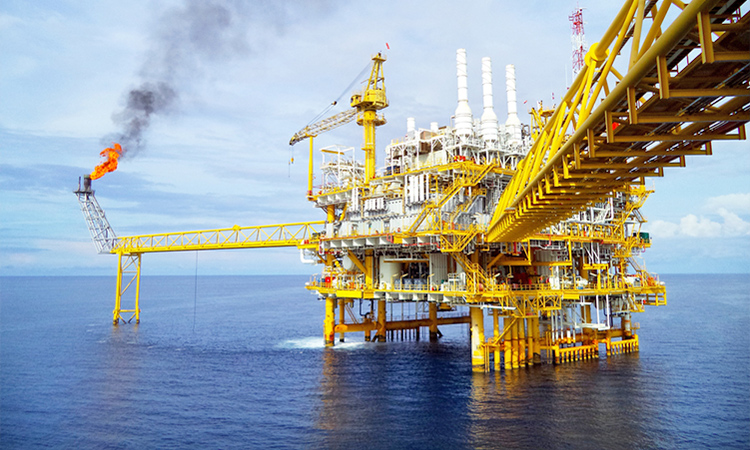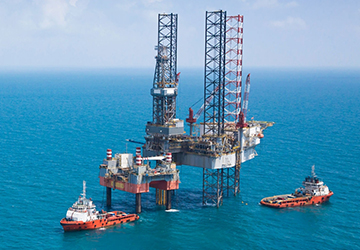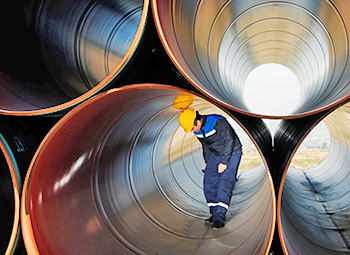
Oil Well Drilling
where an understanding of oil well drilling needs distinct
expertise. , And full knowledge of the factors that the
drilling engineer needs before starting the drilling
process, in order to choose the appropriate method for
drilling, and to use equipment appropriate to the nature
of the rocks, the expected temperature and pressure, of
course, after taking into account the presence of other
(wells) or not, because this will also affect the course
Drilling process

Business, environmental protection and waste treatment
Determining the location of the oil. In the past,
exploration wells were drilled in the places where you
expect to have oil, while advanced technologies are used
that allow testing the presence of oil beneath the
surface, such as the use of seismic surveys, or by using
magnetic methods, or aerial photography using aircraft and
satellites , And sonar devices. Natural gas is extracted
from its locations using wells, and natural gas is found
in places far from the beaches. The exploration companies
for this work transfer the quantities of gas extracted
from production platforms by pipes, to be collected on the
beach and then refined in refineries and refined. The
purification stage passes through the first stages, which
are: separating water and other liquids from the gas, and
then the extracted dry gas is passed through a cooler, and
it is sold and marketed as liquefied natural gas, or
filled with bottles as fuel, and the remaining natural gas
is pumped through a special supply network , Or ask him to
cool and press, then sell it as natural gas

Oil and gas production
Oil extraction services where the location of the oil and
its fields is determined: geologists resort to seismic
surveys to explore the locations of oil fields, and to
explore geologically appropriate places to establish and
build oil tanks in them. The methods adopted at this stage
are measuring gravity and measuring magnetism. Drilling
wells to reach oil: This stage of the process of
extracting oil and extracting it to drilling oil wells is
done by creating a deep and long hole in the depths of the
earth through a special tool called the oil platform, and
at the top of the hole is the so-called "Christmas tree"
consisting of interconnected pumps and valves With each
other to control the process of pressure and the flow of
oil from its sources. Petroleum extraction and extraction:
This stage includes two basic steps: extraction and then
the transition to the gas diffusion stage and lifting it
to the top of the reservoir and the transition to the
stage of dissolution of dissolved gas in crude oil and
disposal of gravity caused by the movement of the oil
material between the upper and lower reservoir parts where
the wells. Secondary extraction: As time passes over the
life of an oil well, the pressure factor begins to
decrease, so geologists resort to secondary extraction
methods by injecting oil tanks with water to raise and
stimulate its ability to compress, and to stimulate
natural gas wells to increase the strength of the gas lift
by injecting them with carbon dioxide Or the air at the
bottom of the active gas well

Oil well drilling services
where an understanding of oil well drilling needs distinct
expertise. , And full knowledge of the factors that the
drilling engineer needs before starting the drilling
process, in order to choose the appropriate method for
drilling, and to use equipment appropriate to the nature
of the rocks, the expected temperature and pressure, of
course, after taking into account the presence of other
(wells) or not, because this will also affect the course
Drilling process

Laying and installing oil and gas lines
Pipelines play an important role in the business and
economy of modern societies. The pipeline carries most of
the water used in homes and industrial businesses,
transporting natural gas and oil, and petroleum products
such as petroleum and others. The pipeline is used to
carry coal granules, iron ore and limestone. Many
pipelines consist of steel tubes connected together by
welding. However, many gas and water pipelines are also
made of plastic materials from aluminum, concrete, iron,
or asbestos and cement. Water pipelines are often built in
the form of parts connected together with special joints
that are installed with gaskets to prevent water leakage,
or sealing valves that prevent water and gas leakage. The
pipeline may reach over 4,800 km. The diameter of the
tubes ranges from five centimeters to 5 meters. They are
buried about a meter away, while others are dumped on the
ground or placed on piers installed on the roof. After
about a meter, while others are cast on the ground or
placed on substrates installed on the surface. Some lines
extend under water or across deserts, over mountains or
under rivers and lakes. Despite the high costs of
constructing pipelines, they are considered relatively
cheap to operate and maintain. Pipelines are used to
distribute fuel for energy production, mainly oil and its
products, and natural gas more than any other method

Artwork necessary for oil production
Auxiliary works in research and exploration for oil.
Providing studies, analyzing data, and providing
geological and consulting studies in the oil and gas
field. Carrying out coastal surveys and marine works,
access to foreign experts and their participation,
reservoirs and dancing cleaning. Carrying out maintenance
and protection works, furnishing the oil fields,
completing procedures related to oil stations and all
their services and transportation services, as well as
purchasing materials and equipment and machinery used in
the oil region and importing them from abroad, either
temporary or permanent. Providing transportation services
for materials, equipment and machines related to drilling
in marine and desert areas.